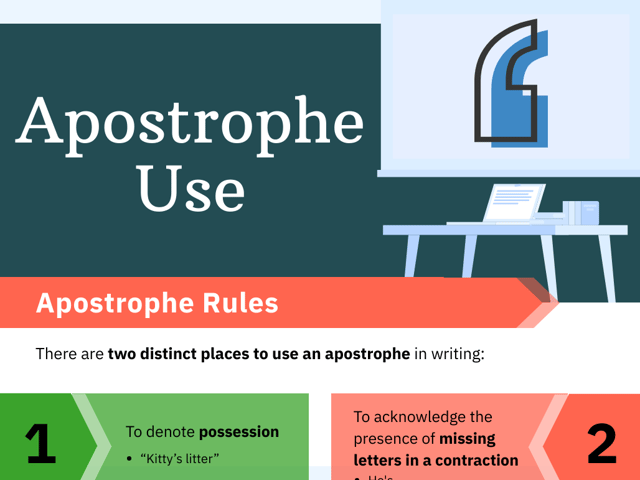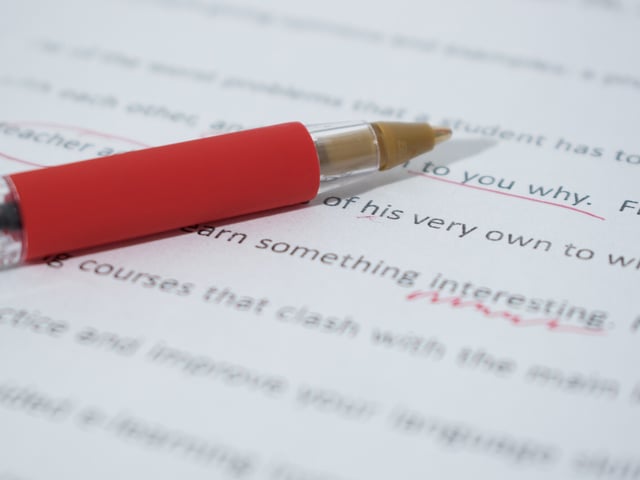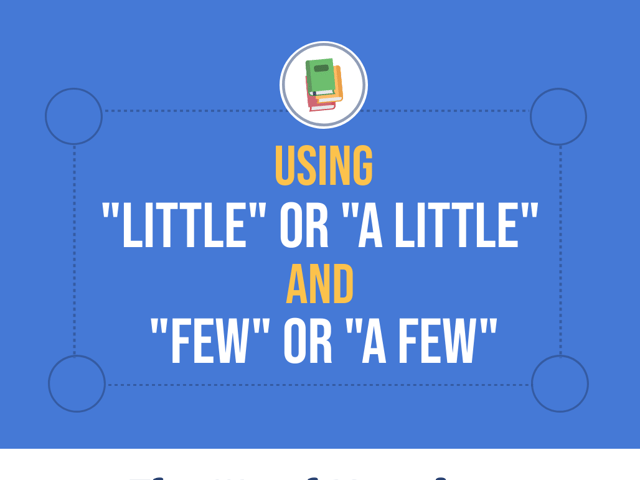
Apostrophe Use
Apostrophes are visible practically everywhere, from the brand name emblazoned above a store window, to the headlines found in the morning paper. Despite their commonness, apostrophes can give people a lot of trouble.
Apostrophe Rules
There are two distinct places to use an apostrophe in writing:
- to denote possession (“Kitty’s litter”)
- to acknowledge the presence of missing letters in a contraction (“he’s”)
Although these rules may seem simple enough, they are frequently not adhered to, or confused with other grammar rules. First, we will tackle the most common misuse of apostrophes.
Incorrect Apostrophe Usage
The most common misuse of apostrophes involves placing an apostrophe to suggest multiples, rather than possession. For instance, a sign outside of a deli might (mistakenly) read, “Egg’s available!” Rather than identifying the presence of multiple eggs, as the deli is clearly trying to do, the sign instead suggests that the eggs in the store possess something that is, in fact, available.
In posting egg’s available rather than eggs available, you are also committing a structural error: although the two-worded sentence eggs available is more than enough to communicate what the deli is trying to convey, egg’s available is left open-ended, as it is missing the part of the sentence that would identify what item is possessed by the egg.
Correct Apostrophe Usage
When are apostrophes correctly used, then?
In Contractions
When using an apostrophe in contractions, the apostrophe replaces a missing letter.
-
In contracting do not, for instance, the apostrophe is found between the n and t, where o used to be. Do not becomes don’t.
-
In contracting she is, the apostrophe takes the place of the missing *i, turning the word into she’s.
-
When making a contraction, the apostrophe will always take the place of the missing letter or letters. Should not have, for instance, is a longer contraction (and should typically be avoided in formal writing), but apostrophes still take the place of missing letters, turning into shouldn’t’ve.
To Show Possession
-
To denote singular possession, an apostrophe is placed at the end of a name, place, or object, accompanied by an s. If a monkey has a banana, an apostrophe would follow this format: “The monkey’s banana.”
-
In plural possession, an apostrophe may not be accompanied by an s at all, but may simply end in an apostrophe. If many horses share one owner, then, a possessive contraction would read: “The horses’ owner.”
Additional examples of plural possessives could read:
The boys’ bedroom alarm rang for ten minutes before they woke up.
If the alarm belonged to one boy, it would read:
The boy’s bedroom alarm…
As these rules might not be immediately clear, practice writing different types of possession to familiarize yourself with the way singular and plural possessives look, and to gain confidence in using apostrophes to indicate possession.
Troublesome Apostrophe Decisions
There are two instances in which the use of apostrophes can be difficult.
Singular vs. Plural Possession
The first is when a singular word ends in s, as is the case with the name Jones. Singular possessive rules dictate that the word is spelled with an apostrophe and an s. Ownership of a cat by a single person named Jones, then, would be written as:
Ned Jones’s cat…
A cat owned by multiple people named Jones, conversely, would read:
The Jones’ cat…
While it may initially seem strange to conclude a word that already ends in s with an apostrophe and an additional s, this is a steadfast rule in creating singular possessives.
Its and It’s
The second difficult rule to follow involves the difference between its and it’s: both it is and it possesses seem to require an apostrophe and an s, but this is not the case.
-
The possessive it is spelled without an apostrophe, to create its.
-
The contraction for it is, however,does use the apostrophe and an s to suggest that a letter is missing (in this case, the letter I).
It’s and its can confuse even the most steadfast writer. To readily determine whether or not to use an apostrophe, try substituting it is for the word. If it fits, you need the apostrophe. If not, omit it.
Also, practice identifying its and it’s in your own writing and in books, magazines, and articles. This will help you sniff out the proper use of it’s and its, and will make you far more confident in distinguishing the two.

Keep Reading

English Basics Blog
How to Write a Compare and Contrast Essay
When you were in school, you probably had to write a lot of different t…

English Basics Blog
What are Superlatives?
We spend our lives making comparisons, whether we realize it or not. Wh…

English Basics Blog
When to Use “Little” or “a Little” and “Few” or “a Few”
Few aspects of the English language can grow as convoluted as when to u…